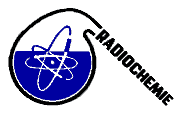Speaker
Mrs
Aliya Nurmukhanbetova
(Institute of Nuclear Physics)
Description
Ecological situation of Mangystau oblast (Kazakhstan) started aggravating in 1990s with exploration of uranium ore, oils, mineral raw and creation chemical industry in Mangyshlak without paying due attention to environmental issue. According to available data the worsening is connected to number of ecologically unfavorable problems.
The tailing pond KOSHKAR-ATA, representing the drain-free settling pool for industrial, toxic, chemical and radioactive wastes, as well as for ordinary domestic drains, is 5 km northward to Aktau (Mangystau oblast), which is situated on the shore of the Caspian sea. Industrial, toxic and radioactive waste, solid sediments of unpurified ordinary domestic drains form a part of the Aktau dwelling region have been drained into the tailing pond since 1965 and have been stored there up to now.
Thus, continuous and long-term contamination of the lands around the tailing pond KOSHKAR-ATA and their vegetation unambiguously forces to consider regional ecological situation as critical. That is why it is very important to take immediate measures in order to reduce sequences, eliminate the reasons and sources of contamination and restore natural characteristics of environmental.
Field investigations are performed in the scope that assures detailed radiometric surveying of the shore zone of the tailing pool KOSHKAR-ATA and its coast.
The field investigations included: there was performed mapping of current outline of the coast-line/water edge of the toxic waste storage; there was performed footpath gamma-surveying of the shore exposed surface (EDR was measured in 150 points) and there was mapped the gamma-field distribution; there was assessed the volume activity for radon over the shore exposed surface of the tailing pool.; there were performed the detailed gamma-surveying in the vicinity of surface burial of radioactive waste (RW); there were performed the monitoring measurements of aerosols at 10 stations; there has been performed species identification and taken samples of vegetation at the waste storage in places where soil fill had been previously performed; that was done to estimate radionuclide accumulation rate by vegetation and their further wind transfer.
Analysis showed that there is increased content of such radionuclides as thorium-234, radium-226, led-214, bismuth-214, led-210, uranium-235, thorium-227 in bottom sediment samples.
There were studied presence forms for isotopes of thorium, radium, 210Pb, 238U. Led-210 is considered as one of the most biologically hazardous natural radionuclides, even more radio-toxic as 90Sr. Considerable part of 210Pb (up to 53%) is associated with acid-soluble form what demonstrated its high migration abilities. Mobility series for 210Pb (in %) looks like: acid-soluble forms (40.2%) > exchange forms (11.7%) > water soluble forms (0.4%).
Analysis of obtained results shows that there is higher contents of led-210 in samples taken within the sectors; this is particularly so for the sector “Caspii.”
Primary authors
Mrs
Aliya Nurmukhanbetova
(Institute of Nuclear Physics)
Dr
Kairat Kuterbekov
(L.N. Gumilyov Eurasian National University)
Co-authors
Dr
Sharbat Makenbaeva
(L.N. Gumilyov Eurasian National University)
Mr
Viktor Glushenko
(Institute of Nuclear Physics)
Mr
Viktor Morenko
(Institute of Nuclear Physics)
Mr
sergei Lukashenko
(National Nuclear Center)

